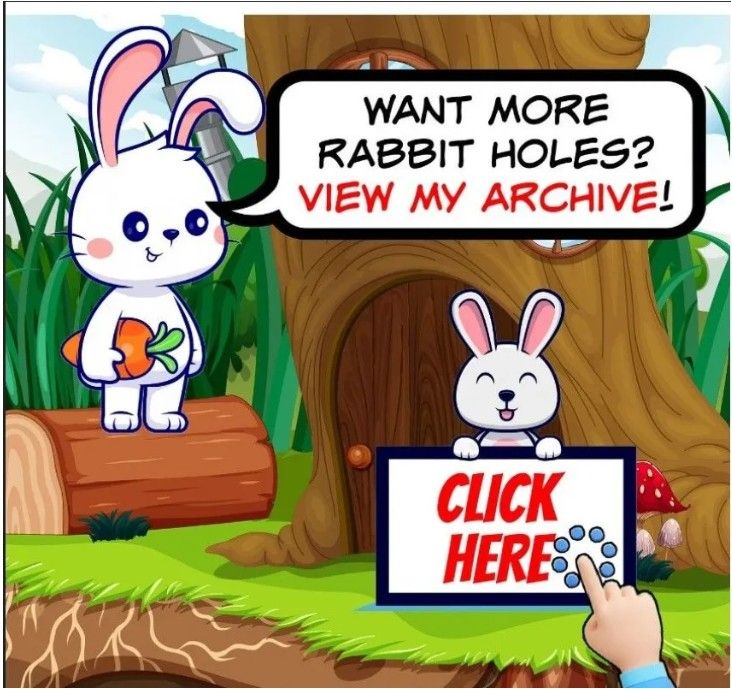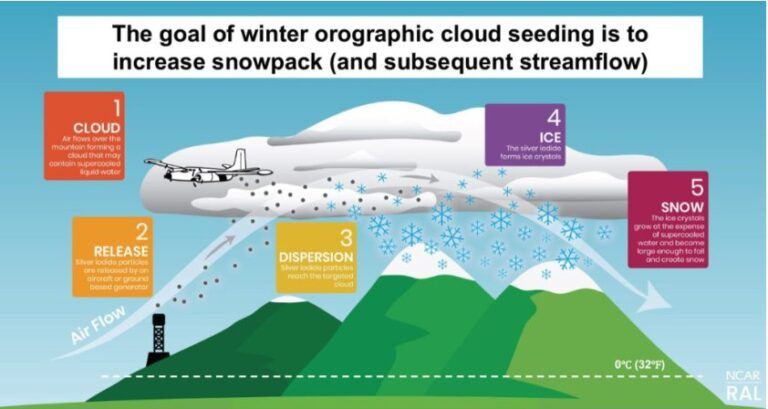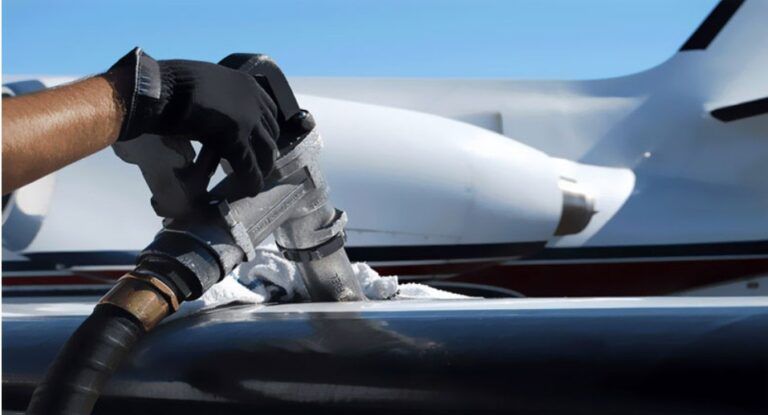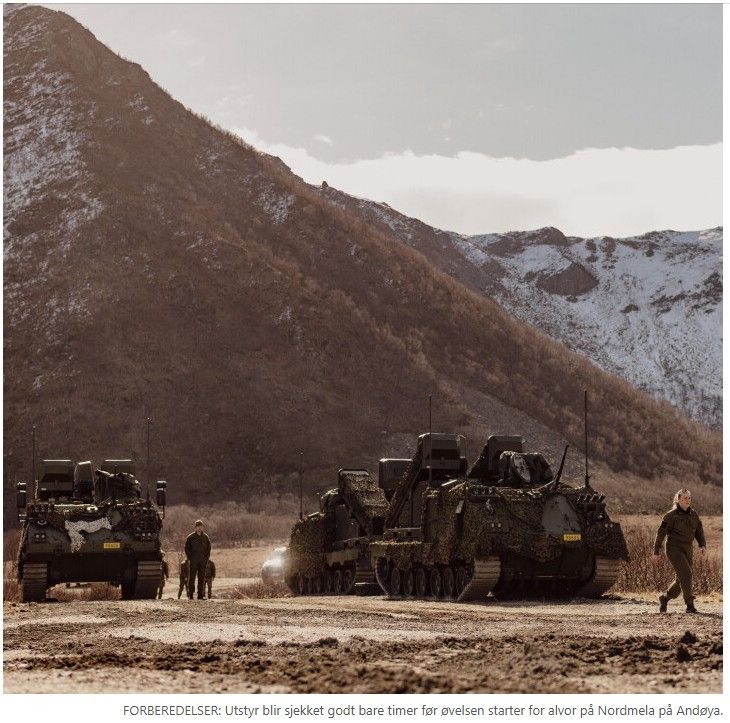| Siden minst 1958 har militæret engasjert seg i å sprøyte partikler i luften antagelig for å studere værendring. Disse aktivitetene var sporadiske i tid og sted. Men rundt 2010, under Obama-administrasjonen, ble sprøyting av partikler fra luften en nesten daglig aktivitet over hele Nord-Amerika, EU, Det britiske samveldet og andre land, inkludert Kina, Egypt, India, Russland og kanskje andre. Dette var en skjult aktivitet med fornektelse og desinformasjon tilsynelatende koordinert på alle myndighetsnivåer. Ingen informasjon ble gjort tilgjengelig om partikelsammensetningene sprøytet i luften vi alle puster inn, og ingen informasjon om potensielt skadelige helserisiko. Følgende er utsagn / spørsmål med lenker til svar:J. Marvin Herndon, PhD og Mark Whiteside, MD, MPH til dags dato er de eneste forskerne som publiserer i den fagfellevurderte vitenskapelige litteraturen om sammensetningene og folkehelserisikoen ved sprøyting fra luften:● Vitenskapelige og medisinske humanitære publikasjoner (klikk her)● Bevis for ukjent global geoteknikk (klikk her)Samlet innsats for å lure det medisinske samfunnet og innbyggerne i folkehelserisikoen ved sprøyting ved å lyve, tvinge og presse redaktører og journalpersonell til å trekke fagfellevurderte og publiserte folkehelsevitenskapelige artikler (klikk her).Hvordan kan en ikke-forsker forstå sprøyting fra luften og dens konsekvenser, spesielt for helsen? En måte er å lytte til og se på de vitenskapelig korrekte musikkvideoene hvis tekster ble skrevet av J. Marvin Herndon. (Klikk her)Hva sprøyter de ut i luften vi puster inn? Rettsmedisinske vitenskapelige undersøkelser stemmer overens med kullflyveaske, det giftige avfallsproduktet fra kull som er det viktigste stoffet som sprøytes ut i luften vi puster inn (klikk her).Hvordan påvirker partikler som sprøytes i luften været? Vedvarende sprøyting av partikler i områdene der det dannes skyer (1) hemmer nedbør til det kraftige regnskyllet, den såkalte «tørke eller flod» -effekten, (2) varmer opp atmosfæren, (3) forsinker varmetapet fra Jorden, og (4) absorberer sollys når den faller til jorden. Kort sagt, sprøyting fra luft ødelegger den naturlige værsyklusen, forurenser jordens biosfære og forårsaker global oppvarming – konsekvenser som feilaktig blir skyldt på forbrenning av fossilt brensel.Tørking i California: Sett scenen for branner i California (klikk her).Hvordan kan sprøyting fra luften skade menneskers helse? De skadelige folkehelseeffektene av aerosolisert partikler kan utledes fra forurensningsstudier av partikler 2,5 mm og mindre. Eksponering for slike partikler har vist seg å være assosiert med økt sykehusinnleggelse, sykelighet og for tidlig dødelighet, risiko for hjerte- og karsykdommer og lungekreft, andre lungesykdommer inkludert astma, diabetes, risiko for hjerneslag, Alzheimers sykdom, redusert nyrefunksjon hos eldre menn, lav fødselsvekt, redusert mannlig fruktbarhet og nedsatt kognitiv evne hos eldre kvinner. Uønskede helseeffekter av aerosolisert kullflyveaske (CFA) inkluderer (1) nevrologiske lidelser, slik som autismespektrumforstyrrelse, Alzheimers og Parkinsons sykdom, (2) lungekreft og luftveissykdommer, og (3) en rekke andre lidelser som følge av overflod av giftige elementer i dette materialet, inkludert arsen, kvikksølv og radioaktive elementer. De som er mest utsatt er de unge, de gamle og de med nedsatt åndedretts- og immunforsvar.Et åpent brev til medlemmer av AGU, EGU og IPCC om påstand om markedsføring av falsk vitenskap på bekostning av menneskelig og miljømessig helse (Klikk her).Jordforskere, selv de som studerer atmosfæren, er tause om den nær daglige sprøyting av luftpartikler som om den ikke eksisterer. Hvorfor ville de ikke fortelle sannheten når vitenskap handler om å fortelle sannheten, den fulle sannheten? Hva ødela jordforskere? (Klikk her)Forklaringer på tre forsøk (to vellykkede) av et desinformasjonsteam for å forårsake tilbaketrekninger av fagfellevurderte og publiserte folkehelsevitenskapelige artikler som gir bevis for langsom og lumsk aerosolforgiftning av millioner av mennesker. Ingen har rett til å forgifte mennesker, og ingen har rett til å skjule folkehelserisiko for publikum. Handlingene deres viser at de som bestiller aerosolsprøyting, kjenner godt til helserisikoen og ønsker å skjule kunnskapen for publikum. (klikk her for pdf) |
| Nettside: Offentlig bedrag av forskere i miljøforskningsbrev (klikk her)Nettside: Science Magazine Geoengineering Ikke-debatt: Uvitenhet er ikke et alternativ, men heller ikke bedrag (klikk her) Nettside: Kommunikasjon med San Diego-tjenestemenn (klikk her) PDF: Delvis liste over nettsteder som rapporterer giftig sprøyting (klikk her) Tusenvis av bilder som viser sprøyting av luftpartikler (klikk her) |
CONTRAILS FACTS
The Air Force operates many aircraft and space systems that are constantly interacting with the
environment. Atmospheric interactions such as exhaust gases forming contrails, chaff and flares
deployment that produce smoke, aerial pest or weed control spraying, or in-flight emergency
fuel releases usually have very minor environmental impacts over a very limited geographical
area. This site provides basic information and links about contrails, aircraft and space launch
exhaust emissions, chaff and flares, aerial spraying, in-flight emergency procedures, and related
topics.
Aircraft, engines, chaff, and flares can produce a variety of condensation patterns (or contrails),
exhaust plumes, vapor trails, or smoke patterns. The exhaust emissions produced by aircraft
and space launch vehicles can produce contrails that look very similar to clouds which can last
for only a few seconds or as long as several hours. Vapor trails are formed only under certain
atmospheric conditions and create a visible atmospheric wake similar to a boat propeller in
water and usually dissipate very rapidly. Chaff and flares produce unique smoke patterns that
are visibly different than a contrail but have the same color and appearance as a cloud but
which also typically dissipates very quickly. Aerial spraying for pest or weed control and fire
suppression are the only Air Force activities which involve aircraft intentionally spraying
chemical compounds (insecticides, herbicides, fire retardants, oil dispersants). In the case of an
in-flight emergency, jet fuel may be released to lighten the landing weight and minimize the risk
of fire if the aircraft should crash.
Background
The US military has played a significant historical role in the development of aircraft and space
launch vehicles, airspace management, environmental management, and public land
management procedures. In the earliest years of aviation and rocketry and up through the late
1980s, the military owned and operated the majority of the United States aircraft and space
launch fleets. Since the end of the 1991 Persian Gulf War, the USAF has been in a drawdown
and restructuring mode. In 1990, there were approximately 9,059 aircraft in the Air Force
inventory and approximately 6,126 aircraft in 2000. Of the approximately 6,228 aircraft in the
USAF fleet in 1998, 4,447 were assigned to active duty Air Force installations and 1,781 were
assigned to Guard and Reserve units, usually co-located at municipal airports. For a more
detailed discussion on the changing nature of military and civilian aviation, see A Review Of
Military Aviation And Space Issues at http://www.felsef.org/dec99.htm.
In the 1980s, commercial airline passenger
service and satellite telecommunication growth
resulted in an increase in civil aircraft and
space booster fleets with numbers almost
equivalent to the military (total of all services).
Future projections for the next 15 years
indicate that commercial aviation and space
launch fleets will become larger than the
military fleet.
The civil aviation fleet is projected to grow from
12,281 aircraft in 1997 to 25,998 in 2017. The
assumptions on growth rates and types of
aircraft are dependent on many changes in air traffic control, airspace management, and
economic growth, but the general trend for civil aviation is increasing capacity by adding more
frequent flights with smaller regional jets.
Aircraft fly along specific routes and corridors called the National Airspace System (NAS). The
NAS is comprised of the air navigation routes and infrastructure across the United States that
supports approximately 60,000 daily flights of commercial, general aviation, and military flights.
The FAA is the lead federal agency charged with the operations and maintenance of the NAS.
They manage over 5-million square miles of land routes and 23-million square miles of oceanic
routes. The FAA must balance the safety and efficiency of the NAS on a daily basis. Many
agencies and organizations are involved with the National Airspace System for a variety of
purposes: civil air carriers, general aviation, military services, and research organizations. A
typical snapshot of daily aircraft operations in the United States is shown below.
In the last ten years, there has been tremendous growth in the number of aircraft operated
around the world. The majority of aircraft seen overhead are civilian flights, particularly near
large cities. For a more detailed description of the NAS, see A Review Of Military Aviation And
Space Issues: Aerospace And Airspace (Part II) at http://www.felsef.org/jan00.htm.
Condensation Trails («contrails»)
from Aircraft Engine Exhaust
Contrails (short for «condensation
trails») are line-shaped clouds
sometimes produced by aircraft
engine exhaust. The combination of
high humidity and low temperatures
that often exists at aircraft cruise
altitudes allows the formation of
contrails. Contrails are composed
primarily of water (in the form of ice
crystals) and do not pose health
risks to humans. Contrails have
been a normal effect of aviation
since its earliest days. Depending
on the temperature and the amount
of moisture in the air at the aircraft
altitude, contrails can either
evaporate quickly or they can persist and grow. Engine exhaust produces only a small portion of
the water that forms ice in persistent contrails. Persistent contrails are mainly composed of
water naturally present along the aircraft flight path.
Aircraft engines emit water vapor, carbon dioxide (CO2), small amounts of nitrogen oxides
(NOx), hydrocarbons, carbon monoxide, sulfur gases, and soot and metal particles formed by
the high-temperature combustion of jet fuel during flight. Of these emittants, only water vapor is
necessary for contrail formation. Sulfur gases are also of potential interest because they lead to
the formation of small particles. Particles suitable for water droplet formation are necessary for
contrail formation. Initial contrail particles, however, can either be already present in the
atmosphere or formed in the exhaust gas. All other engine emissions are considered
nonessential to contrail formation.
For a contrail to form, suitable
conditions must occur immediately
behind a jet engine in the expanding
engine exhaust plume. A contrail will
form if, as the exhaust gases cool
and mix with surrounding air, the
humidity becomes high enough (or,
equivalently, the air temperature
becomes low enough) for liquid
water to condense on particles and
form liquid droplets. If the local air is
cold enough, these newly formed
droplets then freeze and form ice
particles that make up a contrail.
Because the basic processes are
very well understood, contrail formation for a given aircraft flight can be accurately predicted if
atmospheric temperature and humidity conditions are known.
After the initial formation of ice, a
contrail evolves in one of two ways.
If the humidity is low, the contrail will
be short-lived. Newly formed ice
particles will quickly evaporate. The
resulting contrail will extend only a
short distance behind the aircraft. If
the humidity is high, the contrail will
be persistent. Newly formed ice
particles will continue to grow in size
by taking water from the surrounding
atmosphere. The resulting lineshaped contrail extends for large
distances behind an aircraft.
Persistent contrails can last for
hours while growing to several
kilometers in width and 200 to 400
meters in height. Contrails spread
because of air turbulence created by
the passage of aircraft, differences
in wind speed along the flight track,
and possibly through effects of solar
heating.
Thus, the surrounding atmosphere’s
conditions determine to a large
extent whether or not a contrail will
form after an aircraft’s passage, and
how it evolves. Other factors that
influence contrail formation include
engine fuel efficiency, which affects
the amount of heat and water
emitted in the exhaust plume.
Contrails become visible roughly about a wingspan distance behind the aircraft. Contrails can
be formed by propeller or jet turbine powered aircraft. During WWII, large formations of bombers
left strikingly remarkable contrail formations. Typical contrails are shown below.
The contrails formed by the exhaust at high altitude are typically white and very similar to cirrus
clouds. As the exhaust gases expand and mix with the atmosphere, the contrail diffuses and
spreads. It is very difficult to distinguish aged contrails from cirrus clouds. It is very difficult to
distinguish aged contrails from cirrus clouds. At sunsets, these contrails can be visibly eyecatching and striking as they reflect the blue, yellow, and red spectrum of the reflected sunlight.
Persistent contrails are of interest to
scientists because they affect the
cloudiness of the atmosphere.
Scientists in the United States,
Europe, and elsewhere have studied
contrail formation, occurrence, and
persistence, and research efforts on
these topics continue. Shown below
is a photo taken from the research
aircraft Falcon of the German
Aerospace Center (Deutsches
Zentrum fh r Luft- und Raumfahrt
(DLR) at about flight level 33,300
feet of an Airbus A340 with contrails
(left) and a Boeing 707 without
contrails (right). This illustrates a
scientific effort to evaluate the
effects of different engine
characteristics on contrail formation.
The Air Force uses a Boeing 707 airframe for the KC-135 refueling and E-3 AWACS aircraft.
The KC-135 fleet is in the process of upgrading to newer engines which produce fewer
emissions and noise.Scientific research on contrails was recently summarized by an
international group of experts. This summary can be found in Chapter 3 of the report, «Aviation
and the Global Atmosphere,» published in 1999 by Cambridge University Press for the
Intergovernmental Panel on Climate Change (IPCC). The report describes current knowledge
regarding the effects of aircraft emissions on the global atmosphere. The full report is available
from Cambridge University Press and a summary of this report is at www.ipcc.ch.
Wingtip Condensation Trails
A different type of contrail or condensation trail is caused when a wing surface or winglet causes
a cavitation of air in very humid conditions. This results in a unique vapor trail that is not formed
due to exhaust gases. The next time you fly in a commercial aircraft through a rain cloud, look
for the vapor trails that form over and around the wing. Typical fighter wingtip contrails are
shown below.
Exhaust Gases and Emissions
Often, military aircraft can be seen taking off with a black smoke appearing from the engines.
This smoke is mainly soot particles, similar to diesel engines. Commercial aircraft also produce
the same type of soot particles, but usually not to the same degree as military aircraft. This is for
two reasons: the type of fuel and the type of engines.
Most military aircraft use JP-8 jet fuel which is a blend of commercial Jet Aviation Fuel -1 (or Jet
A-1) with three extra additives. The additives are used to control ice formation, control biogrowth
(molds and slimes), and inhibit corrosion. The military uses these additives because of the
unique environments the military operates in, the type of self-sealing fuel tanks used, and the
type of metals, plastics, and sealant used on military aircraft. Several specialized aircraft like the
SR-71 and U-2 use different fuels than JP-8, but are developed from the same base stock.
Fuels research is always ongoing. The newest fuel being brought into production is JP-8+100.
Dubbed JP-8+100 because the additive package can increase the thermal stability of military
fuel by 100 degrees Fahrenheit, the improved fuel helps prevent gums and deposits that can
foul fuel lines.
Military engines are also designed with different performance characteristics than commercial
aircraft. Military aircraft and engines also tend to be older and less efficient than commercial
aircraft and produce more emissions. Engines are optimized for fuel consumption and power
rates at a particular cruising altitude. At take-off, the engines are usually very inefficient and
produce more emissions than when at the optimal cruising altitude. Older military aircraft like the
B-52 and C-130 can leave a black smoke exhaust even at cruising altitude, while aircraft like the
KC-135R with new engines produce an invisible exhaust plume. Typical pictures of aircraft
exhaust emission are shown below.
Space launch vehicles and missiles produce a different type of exhaust than aircraft. The
propulsion system on military rockets and missiles is usually made of solid rocket fuel. Missiles
and rockets produce smoke plumes as a result of the solid fuel burning. The hot gases escaping
from the motor can also create contrails, but the smoke and contrail combine to form a single
exhaust plume. For more information on Air Force propulsion and fuels programs, see the Air
Force Research Laboratory Propulsion Directorate at http://www.pr.afrl.af.mil/.
Chaff and Flares
Chaff and flares are defensive counter measures used on aircraft to confuse radar and heat
seeking missiles. Chaff is used as a decoy for radar seeking missiles and is made of glass
silicate fibers with an aluminum coating. The fibers are approximately 60% glass fiber and 40%
aluminum by weight. The typical Air Force RR-188 chaff bundle contains about 150 g of chaff or
about 5 million fibers. The fibers are 25 microns in diameter and typically 1 to 2 cm in length. In
1997, the Air Force used about 1.8 million bundles worldwide.
The amount of chaff released worldwide by all of the services is approximately 500 tons per
year. Chaff falls to the earth at a settling velocity of approximately 30 cm per second.
Atmospheric residence times range from 10 minutes for the majority of chaff released at 100 m
to approximately 10 hours for chaff released at 10,000 feet. Chaff fibers experience little
breakup before reaching the ground.
After the chaff is ejected from the aircraft and into the aircraft slipstream, the chaff packages
burst open and the fibers scatter to form a radar-reflective cloud called a chaff corridor. Each
chaff package is designed to simulate an aircraft. Several aircraft can create a chaff curtain,
consisting of thousands of false targets, which confuse the radar guidance package on a missile
so they are unable to locate the real targets within the chaff cloud.
Virtually all chaff fibers are 10-100 times larger than PM10 and PM2.5, the air particulates of
concern for public health. The primary fiber size is usually too large to be inhaled by livestock,
but if they are inhaled they do not penetrate far into the respiratory system and can be easily
cleared out. The possible nutritional effects due to chaff ingestion and the risk is minimal to nil
for both humans and livestock, considering the chemical composition of chaff (essentially
identical to soil) and low chaff loading on the environment. Chaff decomposing in water has no
adverse impacts on water chemistry or aquatic life.
Flares are of two types: decoy flares that protect aircraft from infrared missiles, and ground
illumination flares. Decoy flares are typically made of magnesium that burns white-hot and are
designed to defeat a missile’s infrared (IR) tracking capability. The intense heat of the
pyrotechnic candle consumes the flare housing. Common aerial flares are: ALA-17/B, M-206,
MJU-2, MJU-7 A/B, MJU-10/B, MJU-23/B, and RR-119.
Ground illumination flares, are designed to descend by parachute and provide up to 30 minutes
of illumination of ground targets or activities. Typical flares are the LUU-1, LLU-5, and LLU-2B.
A typical LLU-2B sectional is shown below.
The ground illumination flare enhances a pilot’s ability to see targets while using Night Vision
Goggles (NVGs). Flares burn at uneven rates and fluctuate in brightness and are not used as
frequently as in the past as the intense light interferes with the newer NVGs more sensitive
sensors.
The composition and materials of flares used by the military are similar to standard flares used
for aerial, highway and marine purposes. (Skyline). While unburned decoy flares falling from
high altitude could be dangerous, flares are designed to burn up during the descent (even the
aluminum casing is burned).
Chaff and flares are deployed on most Air Force aircraft from a common MJU-11 Chaff/Flare
magazine that is integrated with the warning receiver (a device that alerts the aircraft a missile
has locked onto the aircraft). The magazine has a capacity of 30 RR-188 or 30 M-206 flares.
A very thorough independent description of military systems, equipment, and capabilities is
published by the American Federation of Scientists.
Typical chaff and flare deployments and patterns are shown in the following pictures.
Aerial Spraying
There are some specific uses of commercial, private, and military aviation where chemicals are
introduced in the atmosphere. The most common association of aerial chemical release is
spraying for insects, either as crop dusting or mosquito prevention measures. These activities
are typically performed at low altitude levels and produce a mist spray that drops to the earth’s
surface.
The only unit in the Air Force capable of aerial
spray operations to control disease-carrying pests
and insects is the AFRC’s 910th Airlift Wing,
Youngstown-Warren Air Reserve Station, Ohio
(http://www.afrc.af.mil/units/910aw/default.htm).
The aerial spray mission uses four specially
configured C-130 Hercules shown below. Aerial
spraying enables large parcels of land or water to
be treated safely, quickly, accurately, and cheaply.
This is the only fixed wing aerial-spray capability in
the Department of Defense.
The mission started back in World War II, when legions of American GIs fell victim to malaria
and dengue fever, diseases spread by mosquitoes. The mission was taken over from the active
force in 1973. Although most of the unit’s missions are initiated by the Department of Defense,
its services are also requested by local, state and other federal agencies and coordinated the
Center for Disease Control. The most common missions flown are for mosquito, sand flea and
weed control. Several states have also requested support to combat grasshoppers and locusts.
Aerial spray missions have been flown in Puerto Rico, Panama, Guam and the Azores.
The chemical compounds used for mosquito control are EPA controlled and the Air Force uses
two primary brands; Dibrom and Anvil 10+10. Dibrom is manufactured by AMVAC Chemical
Corporation and is classified as a Naled compound. Naled is an organophosphate insecticide
that has been in use since 1959. It is used primarily for controlling adult mosquitoes but is also
used on food and food crops, greenhouses and pet flea collars. Naled is applied using UltraLow Volume sprayers which dispense very fine aerosol droplets which kills the adult mosquito
on contact. Naled is applies at a maximum aerial spray rate of 0.8 ounces of active ingredient
per acre. Anvil 10+10 is manufactured by Clarke Mosquito Control Products, Inc and is a
Sumithren, also known as a Synergized Synthetic Pyrethoid. Anvil 10+10 is applied using UltraLow Volume sprayers at a maximum aerial spray rate of 0.62 ounces of active ingredient per
acre.
The chemical compounds used for herbicide weed control are EPA controlled and the Air Force
uses Dupont Krovar I DF and Dow Agro Sciences Tordon K. Krovar I DF comes in granular
form, is mixed with water and applied as an aerosol to control annual weeds at a rate of 4-6
pounds mixed with 40-100 gallons of water per acre. Tordon K is used as a herbicide to control
broadleaf weeds, woody plants, and vines on non-crop areas such as forest planting sites,
industrial manufacturing sites, rights-of-way such as electrical power lines, communications
lines, pipelines, roadsides, railroads, and wildlife openings. Tordon K is applied at a maximum of
2 quarts per acre.
The 910th Airlift Wing has formed an Oil Dispersant Working Group, and is working with
industry and government agencies to test aerial spray methods of controlling major offshore oil
spills in coastal waters of the United States. The unit has six Modular Aerial Spray Systems
(MASS) and four aircraft modified to accept the MAAS. Each MASS has a 2,000 gallon capacity
and flow rate are set at 232 gallons per minute. The aircraft flies at 200 Knots Ground Speed at
about 100 feet which covers a swath width of 100 feet for an average application rate of flow
rate of 5 gallons per acre (variable 3-15 gallons per acre). Total spray-on time for 2,000 gallons
lasts about 8 minutes and 30 seconds.
Photographs which show military aircraft with sprays coming from unusual locations on the
aircraft are usually re-touched photos (a process that is easy to create using common computer
programs).
Cloud Seeding and Fire Suppression
For a number of years commercial companies
have been involved in cloud seeding and fire
suppression measures. Cloud seeding
requires the release of chemicals in the
atmosphere in an effort to have water crystals
attach themselves and become heavy enough to produce rain. The Air Force does not have a
cloud seeding capability.
Fire suppression involves dumping chemicals onto a
fire using cargo-type aircraft or helicopters. The 731st
Airlift Squadron assigned to the 302nd Airlift Wing,
Peterson Air Force Base, CO., is trained in the use of
modular airborne fire fighting systems that help
firefighting efforts of the U.S. Forest Service by
dropping retardant chemicals directly onto fires. The
unit’s C-130s are loaded with a system designed to
airdrop fire-retardant chemicals used in fighting forest
fires and fertilizing the forest to generate quick
regrowth. The 302nd AW has conducted firefighting response in Colorado, California, Oregon
and Idaho.
U.S. forest fires generally occur in desolate, almost
inaccessible geographical areas. The U.S. Forest
Service turned to air power to help its ground fire
fighting units quickly contain and suppress these fires.
Over the years, the forest service has developed a
highly effective air-attack organization and air tanker
fleet to deal with the forest fire emergency.
In 1970, however, numerous catastrophic forest fires
erupted in southern California, severely overloading the
air tanker fleet’s ability to cope with them all. This led to several U.S. Congressmen requesting
the U.S. Air Force help the forest service by making military aircraft available as a back-up
measure. This in turn led to the development of the Modular Airborne Fire Fighting System
(MAFFS). The system is designed to quickly adapt military C-130 aircraft from a military role to
a fire-suppression role.
Since 1974, the U.S. Air Force Reserve and Air National Guard units
strategically located near high-incident forest fire areas have been
equipped with these MAFFS units, and have sent selected aircrews to
the aircrew training school for instruction in forest service air operations
and procedures.
The MAFFS System is a modular, reusable airborne system for
deploying water and fire retardant chemicals from aircraft in flight. It
consists of seven airborne modules and one ground air compressor module. The system can be
loaded on a C-130 aircraft in two hours, and filled with retardant and compressed air in 15 to 20
minutes. The system is self-contained and requires no aircraft modifications. Each system
weighs 10,500 pounds empty, and has a capacity of 2,700 gallons.
The entire load of retardant is discharged over a fire in 6 to 8 seconds.
Other AFRC aircraft shuttle Forest Service personnel and equipment to fire areas when the
emergency requires a swift deployment to the fire line. This increased mobility allows more
efficient use of Forest Service resources.
In-flight Emergency Fuel Release
Another common, but infrequent, procedure is the release, or venting, of fuel as a safety
measure. If an in-flight emergency (IFE) is declared, a pilot will want to land the aircraft with as
light a load as possible to prevent the possibility of damaging the aircraft and/or causing a fuel
leak on landing. In order to lighten the fuel load a pilot can continue to fly until the fuel is burned
or vent the fuel into the atmosphere. Fuel that is released, or vented, typically atomizes into a
fine spray as it is released and typically evaporates before it reaches the ground. JP-8 jet fuel
released at low altitudes appears as a fine mist and may not volatilize before reaching the
ground surface. The release of fuel does not produce a contrail and appears more like a smoke
pattern that dissipates quickly.
The «Chemtrail» Hoax
A hoax that has been around since 1996 accuses the Air Force of being involved in spraying the
US population with mysterious substances and show various Air Force aircraft «releasing
sprays» or generating unusual contrail patterns. Several authors cite an Air University research
paper titled «Weather as a Force Multiplier: Owning the Weather in 2025»
(http://www.au.af.mil/au/database/research/ay1996/acsc/96-025ag.htm) that suggests the Air
Force is conducting weather modification experiments. The purpose of that paper was part of a
thesis to outline a strategy for the use of a future weather modification system to achieve
military objectives and it does not reflect current military policy, practice, or capability.
The Air Force’s policy is to observe and forecast the weather. The Air Force is focused on
observing and forecasting the weather so the information can be used to support military
operations. The Air Force is not conducting any weather modification experiments or programs
and has no plans to do so in the future.
The «Chemtrail» hoax has been investigated and refuted by many established and accredited
universities, scientific organizations, and major media publications.
Claims and Facts
Claim: Long-lasting contrails are something new and they have abnormal characteristics.
Fact: Contrails can remain visible for very long periods of time with the lifetime a function of the
temperature, humidity, winds, and aircraft exhaust characteristics. Contrails can form many
shapes as they are dispersed by horizontal and vertical wind shear. Sunlight refracted or
reflected from contrails can produce vibrant and eye-catching colors and patterns. Observation
and scientific analysis of contrails and their duration date back to at least 1953.
Claim: Grid patterns of contrails in the sky are evidence of a systematic spraying operation.
Fact: The National Airspace System of the United States is orientated in an east-west and
north-south grid with aircraft flying at designated 2000 foot increments of elevation. Contrails
formed by aircraft may appear to form a grid as the winds disperse the contrails. More contrails
are seen in recent years due to the growth in the civil aviation market. The FAA is responsible
for the NAS and Air Force aircraft operate under the same rules and procedures as civilian
aircraft when using the NAS.
Claim: There are reported outbreaks of illness after the appearance of «Chemtrails»
Fact: There is no such thing as a «Chemtrail». Contrails are safe and are a natural
phenomenon. They pose no health hazard of any kind. If there are massive outbreaks of
illnesses, your local health department should be able to tell you if it is an abnormal event. Local
health departments generally network together when they start seeing problems. If there is a
problem, the CDC will get involved.
Claim: Samples taken have shown the presence of the «DOD patented» bacteria pseudomonas
fluorescens.
Fact: The bacteria claimed to be DOD developed and patented is actually a common, naturally
occurring bacteria. The U.S. Patent Office (www.uspto.gov) lists 181 patents involving
pseudomonas fluorescens, none of which are held by DOD.
Links to Related Sites
• FAA Office of Aviation Research – http://research.faa.gov/aar/
• FAA Office of Environment and Energy – http://aee.hq.faa.gov/
• DOT Bureau of Transportation Statistics – http://www.bts.gov/
• Center For Disease Control and Prevention – http://www.cdc.gov/
• EPA Office of Pesticide Programs – http://www.epa.gov/pesticides
• International Civil Aviation Organization – http://www.icao.int/
• Air Transport Association – http://www.air-transport.org/
• Aerospace Industries Association – http://www.aia-aerospace.org/
• Federation of American Scientists – http://www.fas.org/index.html
• General Electric Aircraft Engines – http://www.geae.net/
• Pratt and Whitney Aircraft Engines – http://www.pratt-whitney.com/engines/
• Rolls-Royce Aircraft Engines – http://194.128.225.11/defence/milp001.htm
References
Intergovernmental Panel on Climate Change (IPCC), 1999. Aviation and the Global
Atmosphere. A Special Report of IPCC Working Groups I and III in collaboration with the
Scientific Assessment Panel to the Montreal Protocol on Substances that Deplete the Ozone
Layer. Published for the IPCC by Cambridge University Press. J.E. Penner, D.H. Lister, D.J.
Griggs, D.J. Dokken, and M. McFarland, editors. 373 pp.
Appleman, H., 1953. The formation of exhaust condensation trails by jet aircraft. Bulletin of the
American Meteorological Society 34: 14-20. Brewer, A.W., 1946. Condensation trails. Weather
1: 34-40.
Chipley, Michael Ph.D. A Review Of Military Aviation And Space Issues, The Forum For
Environmental Law, Science, Engineering And Finance, December 1999.
Chipley, Michael Ph.D. A Review Of Military Aviation And Space Issues: Aerospace And
Airspace» (Part II), The Forum For Environmental Law, Science, Engineering And Finance,
January 2000.
Spargo, B.J., Environmental Effects of RF Chaff, Naval Research Laboratory, Washington,
D.C., August 31, 1999.
Pike, John, Aircraft Weapon Loads, Federation of American Scientists, 2000.
Aircraft and Contrails. EPA publication number EPA430-F-00-005. 6 pp EPA, 2000.
(www.epa.gov/otaq/aviation.htm)
Layman’s Library
Contrails – Contrails, or condensation trails, are «streaks of condensed water vapor created in
the air by an airplane or rocket at high altitudes.»(Webster’s Dictionary). Contrails are the result
of normal emissions of water vapor from jet engines. At high altitudes, water vapor condenses
and turns into a visible cloud. Contrails form when hot humid air from jet engines mixes with the
surrounding air in the atmosphere which is drier and colder. The mixing is a result of turbulence
generated by the jet engine exhaust. The water vapor in the jet exhaust then condenses and
forms a cloud. The rate at which contrails dissipate is entirely dependent upon weather
conditions and altitude. If the atmosphere is near saturation, the contrail may exist for some
time. Conversely, if the atmosphere is dry, the contrail will dissipate quickly.
Contrail Grid Patterns – Numerous contrails are usually over «air routes», or highways in the
sky. Aircraft fly in all different directions at any time, and numerous contrails may seem to
«crisscross». Although contrails may appear to cross, the trails can actually be from planes
separated by significant altitude and time.
Chaff – Chaff are small bundles of aluminum coated fibers that create a large radar reflection. A
radar seeking missile is unable to distinguish an aircraft from the chaff and loses the lock on the
aircraft.
Chemtrails – Chemtrails is a term coined to suggest contrails are formed by something other
than a natural process of engine exhaust hitting the cold air in the atmosphere.
Ethylene dibromide – Ethylene dibromide, or EDB, is a pesticide that was used commercially
before being banned by the Environmental Protection Agency in 1983. During WW II, EDB was
used as an additive in aviation gasoline to help stop lead in the aviation gasoline from plating
out on valves. Jet fuels, including JP-8 have never contained EDB. Soil samples showing the
presence of EDB are most likely residuals from previous use as a pesticide. Webster’s
dictionary definition of EDB: «: a colorless toxic liquid compound C2H4Br2 that is used chiefly as
a fuel additive in leaded gasolines, that has been found to be strongly carcinogenic in laboratory
animals, and that was used formerly in the U.S. as an agricultural pesticide — abbreviation
EDB.»
JP-8 Jet Fuel – JP-8 jet fuel consists of kerosene, a petroleum distillate fraction purchased to
specification. The specification requires that the fuel producer meet a range of chemical and
physical properties to ensure proper aircraft operation. Fuel additives are allowed, but are highly
controlled. Additives include antioxidants, metal deactivators, corrosion inhibitors, fuel system
icing inhibitor, and a static dissipater additive.
Rocket Exhaust – The exhaust plume generated by solid or liquid fueled rockets. Solid rocket
motors are usually made of ammonium perchlorate and typically create light colored exhaust
emissions. The exhaust is mainly carbon dioxide and water, but may also have high levels of
hydrochloric acid formed, but which disperses rapidly. Liquid fuel rockets are generally kerosene
and Liquid Oxygen (LOX) and produce an exhaust, which is darker and similar to aircraft
exhaust. The exhaust is primarily carbon dioxide and water, but may contain nitrous oxides,
sulfides, and soot particles.
Stratospheric Ozone – The ozone formed in the upper atmosphere through the interaction of
the sun’s energy and oxygen and which provides the natural shielding effect for the earth from
UV rays. This ozone layer is susceptible to destruction by chlorinated compounds and is
generally associated with the ozone hole over the Antarctic. Ozone in the lower atmosphere and
ground level is generally a by-product of motor vehicle fuel combustion that forms NOx as a
precursor which then forms ozone. This ozone is often seen as smog in most major cities.
Vapor Trails – The trail formed behind an aircraft as result of air flowing over a surface which
creates a cavity in the air, similar to a boat propeller in water.











+ There are no comments
Add yours